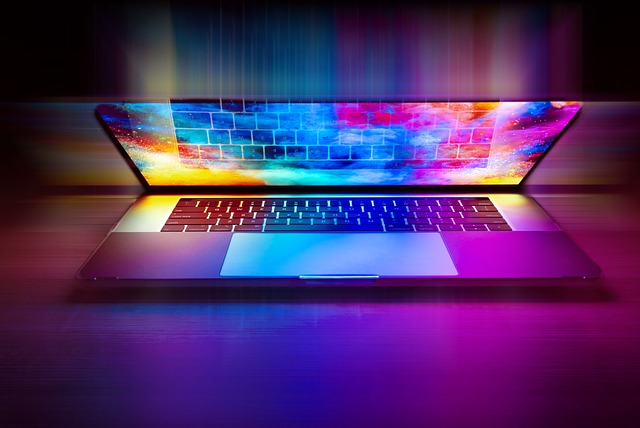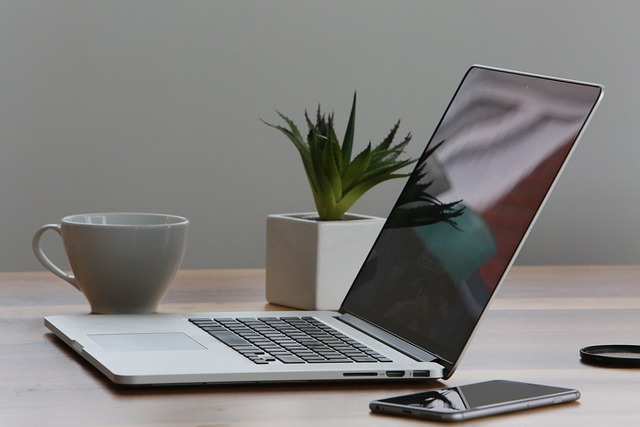To maintain and enhance your laptop's battery life, regularly update your operating system and drivers for improved efficiency. Adjust display settings to a lower brightness for less demanding tasks and consider using a low-power display option. Manage energy consumption by closing unnecessary applications and services, and avoid full battery depletions; instead, use the "green charging" method by recharging when the battery is between 20-30%. Opt for a genuine replacement laptop battery tailored to your device's model and specifications from a reputable brand. Monitor your laptop's battery health through diagnostic tools and maintain it under normal temperature conditions. Utilize built-in power-saving modes, which adapt to your usage patterns to extend battery longevity. Remember that regular firmware updates and occasional battery calibration are necessary to preserve battery health and ensure accurate charge indicators. Should you notice a consistent drop in battery performance, it may be time to invest in a new replacement laptop battery. For those without repair experience, it's safer to opt for professional battery replacement services. These practices will help you maximize your laptop's battery lifespan and overall performance.
7 Tips to Boost Your Laptop Battery Life: Prolong Your Session Beyond the Plug
Enhancing your laptop’s battery longevity is a skill that blends understanding your device’s power usage with practical, daily adjustments. This guide offers actionable insights, from optimizing display settings to implementing smart charging practices, ensuring you get the most out of every charge. We’ll also explore when and how to choose a replacement laptop battery if necessary, and the importance of maintaining optimal temperature conditions for peak performance and endurance. With these tips at your fingertips, you can say goodbye to the anxiety of a low battery indicator and hello to uninterrupted productivity.
- Understanding Your Laptop's Power Consumption
- Optimizing Display Settings for Longer Battery Life
- Managing Energy-Consuming Applications and Background Processes
- Implementing Smart Charging Practices to Extend Battery Health
- Replacing Your Laptop Battery: When and How to Choose a Replacement Laptop Battery
- Utilizing Power Saving Modes and Features
Understanding Your Laptop's Power Consumption

To extend the longevity of your laptop’s battery life, it’s crucial to have a firm grasp of what drains it in the first place. Your laptop’s power consumption is influenced by various factors, including the hardware components, software applications running, and the settings configured on your device. Regularly monitoring your system’s energy usage can help you identify patterns and pinpoint which functions or applications are most power-intensive. For instance, a bright display or an overworked processor can significantly reduce your battery’s endurance. To optimize power efficiency, consider adjusting the screen brightness to a lower setting when not using high-resolution tasks. Additionally, keeping your operating system and drivers up to date can improve overall performance and energy management. Should you find that your laptop’s battery life is consistently falling short, it might be time to explore replacement options for your laptop battery. These specialized batteries are designed to offer optimal performance and can be sourced from reputable manufacturers. By understanding your laptop’s power consumption and making informed adjustments, you can enhance your battery’s lifespan and maintain peak performance for your computing tasks.
Optimizing Display Settings for Longer Battery Life

To maximize your laptop’s battery longevity, it’s crucial to tailor your display settings effectively. A bright and vibrant screen can be appealing, but it significantly drains battery power. Lowering the screen’s brightness is one of the most impactful adjustments you can make for extended usage. Most modern laptops have adaptive brightness controls that automatically adjust the screen’s luminance based on ambient lighting conditions, which can help extend your session without reaching for the charger prematurely. Additionally, reducing the display’s resolution or switching to a power-saving mode can also conserve energy. For instance, if your laptop supports a lower-power display mode, utilizing this setting can noticeably improve battery life. When considering a replacement laptop battery, it’s important to remember that even the best batteries will struggle under a high-demand power profile. Therefore, optimizing these settings not only helps your current battery last longer but also lessens the strain on any future replacements, ensuring you get the most out of your device’s operational life.
Managing Energy-Consuming Applications and Background Processes

To extend your laptop’s battery life, it’s crucial to manage energy-consuming applications and monitor background processes. High-demand software can significantly drain your battery, so prioritize which applications you need open and close those that are not essential. For instance, if you’re not using video editing or 3D rendering software during a work session, it’s best to keep these closed. Similarly, background processes can also sap your power reserves; regularly check the Task Manager on Windows or Activity Monitor on macOS to identify and terminate any unnecessary services running in the background. When you do need to use resource-intensive applications, consider investing in a high-quality replacement laptop battery if you notice a consistent drop in battery performance after such usage. This proactive approach ensures your laptop is equipped to handle energy-intensive tasks without compromising your battery’s longevity. Additionally, adjusting the settings within these applications for optimal performance can help; reducing screen brightness, lowering processor and hard drive activity, or switching to power-saving modes are all effective strategies to conserve energy. By carefully managing the applications that consume the most power and being mindful of what’s running in the background, you can significantly enhance your laptop’s battery life, making the most of your replacement laptop battery.
Implementing Smart Charging Practices to Extend Battery Health

To maintain the integrity and longevity of your laptop’s battery, it’s crucial to adopt smart charging habits. One of the most effective practices is not letting your battery drain completely. It’s a common misconception that fully depleting a battery is beneficial for its health; in reality, this can accelerate battery aging. Instead, recharge your laptop when it drops to around 20-30% capacity. This method, often referred to as “green charging,” keeps the battery healthy and extends its life cycle significantly.
Additionally, opting for a genuine replacement laptop battery, rather than third-party alternatives, is advisable for ensuring optimal performance and longevity. Genuine batteries are tailored to your device’s specifications, which means they provide better efficiency and consistency in charging cycles. Avoid exposure to extreme temperatures, as this can negatively impact the battery’s capacity. Storing your laptop at room temperature and avoiding full charge or discharge cycles will help preserve the battery’s ability to hold a charge over time, ensuring that you can rely on it for longer periods between charges.
Replacing Your Laptop Battery: When and How to Choose a Replacement Laptop Battery

When your laptop’s battery performance degrades over time, it may be a sign that a replacement laptop battery is in order. Lithium-ion batteries typically have a lifespan of around two to three years under normal usage conditions, but factors such as the frequency of charging cycles, storage temperature, and overall maintenance can influence this duration. If you notice your device’s battery life is significantly reduced or not holding a charge like it used to, it might be time for a new one. It’s crucial to monitor your laptop’s battery health through its built-in diagnostics, as this will guide you on when a replacement is necessary.
Choosing the right replacement laptop battery involves several considerations. Firstly, ensure compatibility by selecting a battery that matches your laptop model and battery type. This can typically be found in your device’s documentation or online specifications. Secondly, opt for a reputable brand to guarantee quality and longevity. While it might be tempting to go for cheaper alternatives, low-quality batteries can pose risks such as overheating and potential damage to your laptop. Additionally, check user reviews to gauge the performance of different brands in real-world conditions. When replacing the battery yourself, take precautions to avoid electrostatic discharge and follow the replacement procedure meticulously to prevent any damage to your laptop. If you’re not comfortable with DIY battery replacements, it’s advisable to seek professional assistance. This will ensure that the replacement is performed correctly, thus maintaining your laptop’s performance and longevity.
Utilizing Power Saving Modes and Features

To extend the longevity of your laptop’s battery charge, it’s advisable to take full advantage of the built-in power saving modes and features that modern laptops offer. These features are specifically designed to reduce energy consumption without significantly compromising performance. Activating a power saving mode can decrease CPU usage, dim the screen, and limit background processes, all of which contribute to longer battery life. For instance, most operating systems have a power-saving setting that can be toggled with a click. This setting ensures that your laptop uses energy only as needed, rather than maintaining peak performance at all times. Additionally, many laptops come equipped with battery-saving algorithms that learn and adapt to your usage patterns over time for even more efficient power management. If your laptop’s battery life is consistently falling short, it might be an indication that a replacement laptop battery is due. This is often the most cost-effective solution compared to investing in a new machine. Regularly checking and updating your system’s firmware can also help optimize these power-saving features for peak performance, ensuring that you get the most out of your laptop’s battery life. Remember to calibrate your battery occasionally by fully charging it, then using it until it’s completely depleted. This helps maintain its health and accuracy in displaying charge levels, which is crucial for those who rely on their laptops throughout the day.
In conclusion, enhancing your laptop’s battery life is achievable with practical adjustments and strategic management. By understanding your device’s power consumption patterns, optimizing display settings, managing energy-intensive applications, implementing smart charging habits, leveraging power saving modes, and knowing when to consider a replacement laptop battery, you can significantly extend your laptop’s operational duration between charges. Adopting these seven tips not only improves your current battery life but also contributes to the longevity of your laptop’s battery health. With these strategies in hand, you’re well-equipped to make informed decisions regarding your laptop’s energy efficiency and maintain productivity on the go without frequent recharging.
